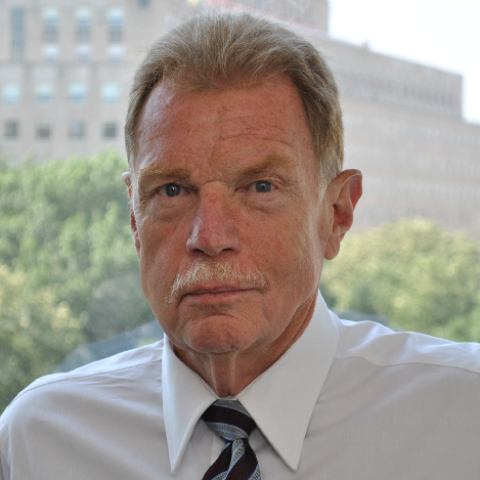**Executive Summary**
p(firstLetter). With a record 63,600 overdose deaths in 2016—the latest year for which there is comprehensive data—the United States is in the midst of the worst drug crisis in its history. While multiple nationwide efforts are underway to stem the damage, all indicators show the opioid crisis continuing to worsen. Effectively confronting this epidemic involves more than just assessing the toll and affixing responsibility. Rather, policy solutions must be provided that will reduce the human and social losses.
The following report provides an overview of recent developments in the opioid epidemic of use, dependency, and overdose deaths; identifies the two major pathways by which opioid initiation worsens into serious personal and social costs; and then reviews emerging policy changes that can serve to mitigate these costs, particularly with regard to the medical practice dimension of the epidemic.
The report contains five central arguments, showing where the crisis now stands and then addressing pathways along which remedies—some existing, some in development—could be provided. It then examines existing empirical support for alternative approaches, evaluates procedural and regulatory impediments to these alternatives, and calls for new models of medical practice and intervention that could alleviate the current opioid crisis.
Specifically, this report shows that:
- With more than 42,000 overdose deaths attributed to opioids for the most recent year with complete data (2016), the toll, as found in preliminary reports for 2017, is still rising. The unprecedented surge in the availability of prescription opioids has been a major driver of opioid use consequences, particularly as excess pills contributed to non-medical “diversion” and may even have triggered a “cross-over” into the illicit market. At this stage of the epidemic, however, the illicit opioid black market, particularly for illegal synthetic opioid analogs smuggled internationally, is the most significant factor leading to overdose deaths.
Prescription deaths have, as of 2016, declined somewhat, while heroin and (illicit) fentanyl-related deaths have risen steeply. The latest data available, found in a report in the Journal of the American Medical Association in May 2018, shows that among 42,249 opioid-related overdose deaths for 2016, 19,413 involved synthetic opioids, 17,087 involved prescription opioids, and 15,469 involved heroin.
Nonetheless, reforming medical practice and pharmaceutical opioid availability remains a significant imperative. Finding better interventions for treating both chronic and acute pain, and moving the medical system “beyond opioids,” appears as a new responsibility for medicine.
While a history of poly-drug abuse proves to be a critical risk factor for experiencing opioid dependency or overdose, for many Americans, such standard medical interventions as surgery represent a substantial pathway for opioid initiation, which not uncommonly leads to persistent opioid use and misuse.
Studies attest that for opioid-naive patients undergoing a variety of surgeries, a substantial fraction (some 6 to 9 percent) will persist in using the opioid prescription many weeks after surgery. In some instances, for patients already opioid-experienced, the proportion of persistent users as much as a year later can range from 45 percent to as high as 71 percent. Non-opioid alternatives are needed in medical practice to reduce opioid exposure beyond necessity.
-
Even under proper medical supervision, an extensive reliance on opioid medications for pain management presents several risks for patients, especially at high doses continued for long periods of time. These risks are present even in the absence of misuse or dependency. While the exact pathway from proper and supervised medical use of opioids to misuse is still poorly understood, evidence of surprisingly large numbers of unused or residual prescription opioids after a medical episode suggests that standard dispensing practice may be over-reliant on opioids when alternatives could supplement, or even supplant, their use.
Overall, the two major pathways for opioid misuse—the illicit opioid black market and the unintended consequences of proper patient care—have in fact intersected in recent years, each feeding the other and providing sources of misuse as the crisis has grown. The flow of illicit narcotics across our borders must be shut down, but standard medical practice must also be reformed in order to stem the rising damage in a manner that will be comprehensive.
-
Progress has been made in one dimension of the effort to reform medical practice regarding opioids. Since a high point in prescribing in 2011, the number of opioid prescriptions, as well as the strength of dosage units, has begun to fall. By 2015, the Centers for Disease Control reported a more than 17 percent decline in pharmaceutical opioid dosages on a per-capita basis.
The improvement has come through administrative action, guideline recommendations from health agencies, congressional pressure, and even proposed shifts in Drug Enforcement Administration production quotas for pharmaceutical manufacturers.
But simply driving down access to medications, while important, cannot by itself be a sufficient response. Not only are patients with legitimate medical needs being pressured, some physicians also feel that their medical judgment is being circumscribed. What is needed is a solution to the other side of the equation, which is to provide non-opioid alternatives to patients who would otherwise be left with untreated serious pain.
- New, multi-modal protocols and medications that incorporate developing as well as existing non-opioid analgesics show promise in surgery and in treating chronic and acute pain. While new drugs are being developed, it is important to note that, as Dr. Keith Humphreys stated in the Washington Post, “The problem in American medicine is not a lack of alternatives to opioids, but the minimal utilization of the many non-opioid treatments for pain that already exist.”
With these new multi-modal models, not only is exposure to opioids reduced substantially and overall circulation of unused opioids curtailed, but, equally important, patient outcomes are improved. Compared to the excessive patient and societal costs of opioid reliance, such superior protocols should result in improved patient flow and discharge, quicker recovery, fewer readmissions to the hospital, and reduced hospital costs.
The long-term result will likely provide superior patient wellbeing and more effective medical practice. Additionally, the goals of reducing the opioid crisis will be provided for without the consequence of untreated pain.
This report reviews multiple studies showing strong empirical evidence of non-opioid alternatives already being deployed successfully in the treatment of chronic and acute pain. Across a wide range of procedures and surgical interventions, non-opioid analgesics such as liposomal bupivacaine are treating patients without them suffering unnecessary pain or occasioning the risks of misuse and dependency.
- There are existing structural and regulatory impediments to the widespread adoption of medical practices that forgo the exclusive reliance on opioids. These impediments present themselves across a range of issues, from physician training to federal billing codes and even insurance expectations, such as found with the “bundling” of payments to hospitals and providers. This report examines ways of overcoming these impediments and calls on all parties addressing the opioid crisis to adopt a new calculus of costs and benefits to the patient and to society when considering pain treatment alternatives.
The report concludes by calling for a new model of patient care, built around a targeted flexibility in the management of pain, incorporating patient involvement and in accord with a better understanding of specific patient vulnerabilities and risks, as a multi-modal framework for treatment is adapted to the particular challenges of each case.
Such a “preventive medicine” approach to patient care should guide such factors as the future of the drug approval process, of medical training, of patient education, and lastly, the development and adoption of an expanded set of medical practice tools.


















